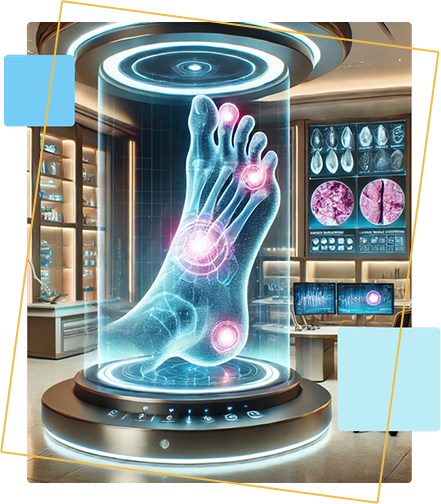
AIMx Podiatry partners with forward-thinking podiatrists to deliver advanced, cash-pay solutions — such as Liposana® —that support patient outcomes and expand treatment options.
Patients present with chronic, painful conditions like fat pad atrophy or persistent plantar fasciitis, often requiring advanced solutions beyond the scope of conventional, less effective treatments.
In a landscape crowded with noise and uncertainty, AIMx is your steady partner. We bring clarity, compliance, and confidence to your wound care approach — so you can move forward knowing you're backed by tools and guidance you trust.
You aspire to lead in podiatric care and grow your practice—but standing out and introducing meaningful, revenue-generating treatments can be a challenge. That’s where we come in.
Address the painful effects of fat pad atrophy with Liposana®. This innovative, minimally invasive solution helps you provide lasting relief by restoring essential cushioning to your patients' feet. It's a highly sought-after, patient-funded treatment that enhances comfort and mobility, setting your practice apart.
Support your approach to complex foot and ankle cases with DPMx™ — a human umbilical cord tissue allograft processed to maintain the structural and functional integrity of the source tissue. Intended for homologous use, DPMx can be applied to support a variety of podiatric procedures.
Podiatrists across the country are transforming their practices & patient care with AIMx Podiatry.
[AIMx Podiatry] provides concierge service by checking with the provider & insurance, & they are very thorough. They’ve always provided me with complete information I need & follow through with how the product is working for patients.

They’re very professional. They’re good at what they do. They’re good at answering questions. They work around the clock for the doctors they partner with. I have only good things to say about the team.

To say this product has greatly helped my patients would be an understatement. The number of surgeries that I am doing has been drastically reduced simply because patients have been getting better and not needing surgery at all.
